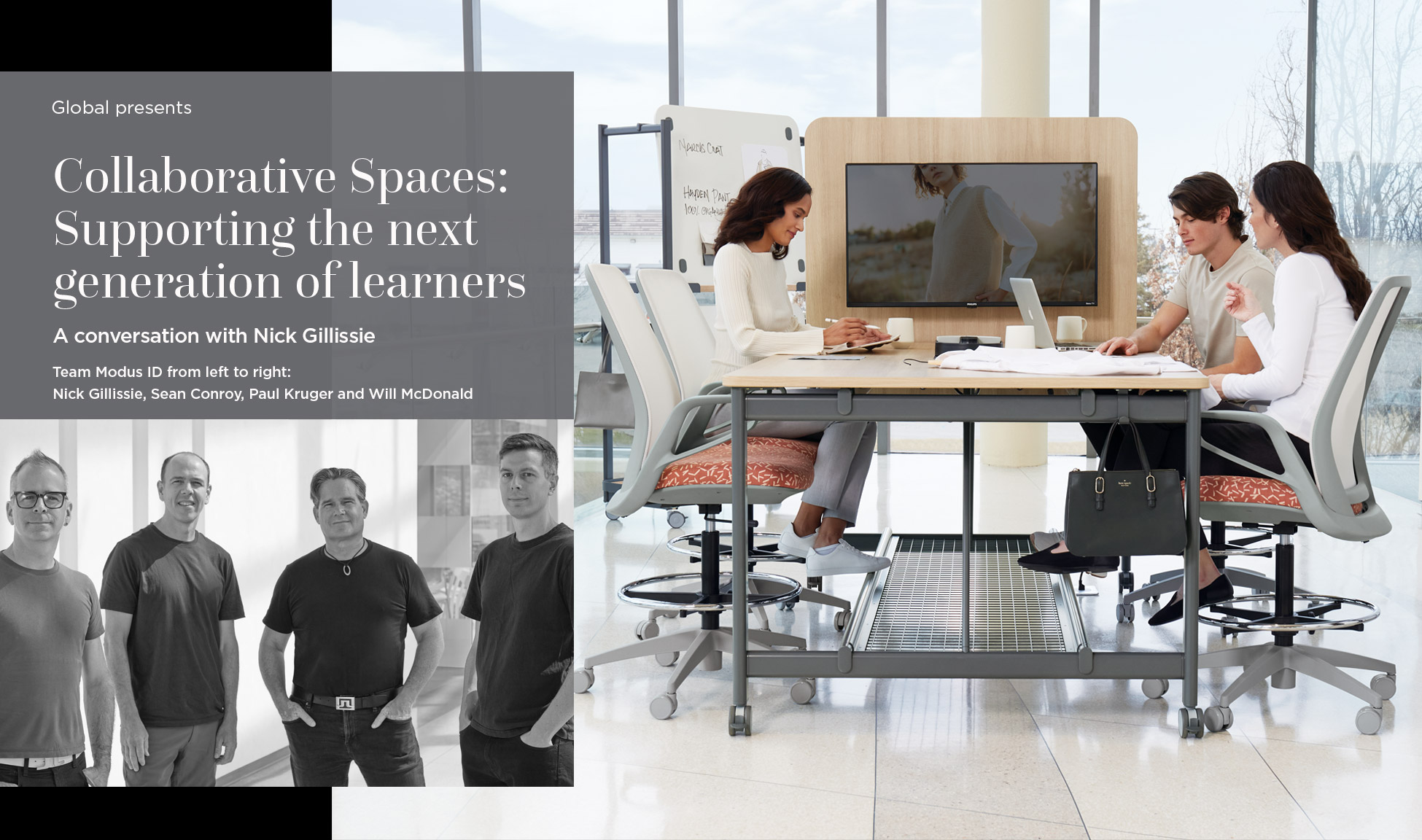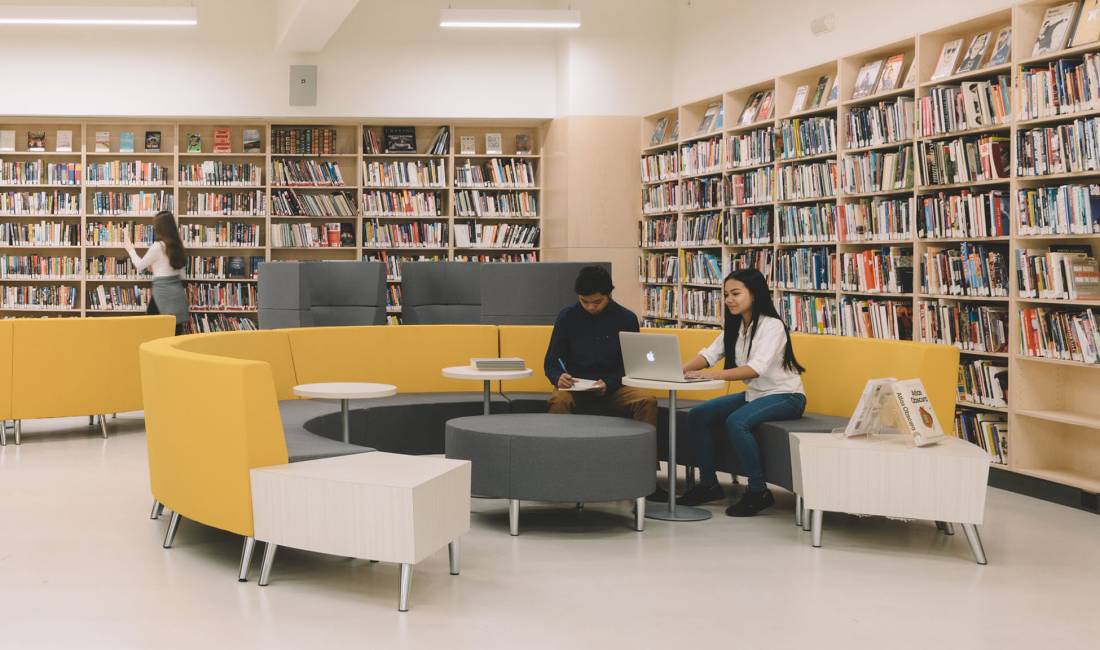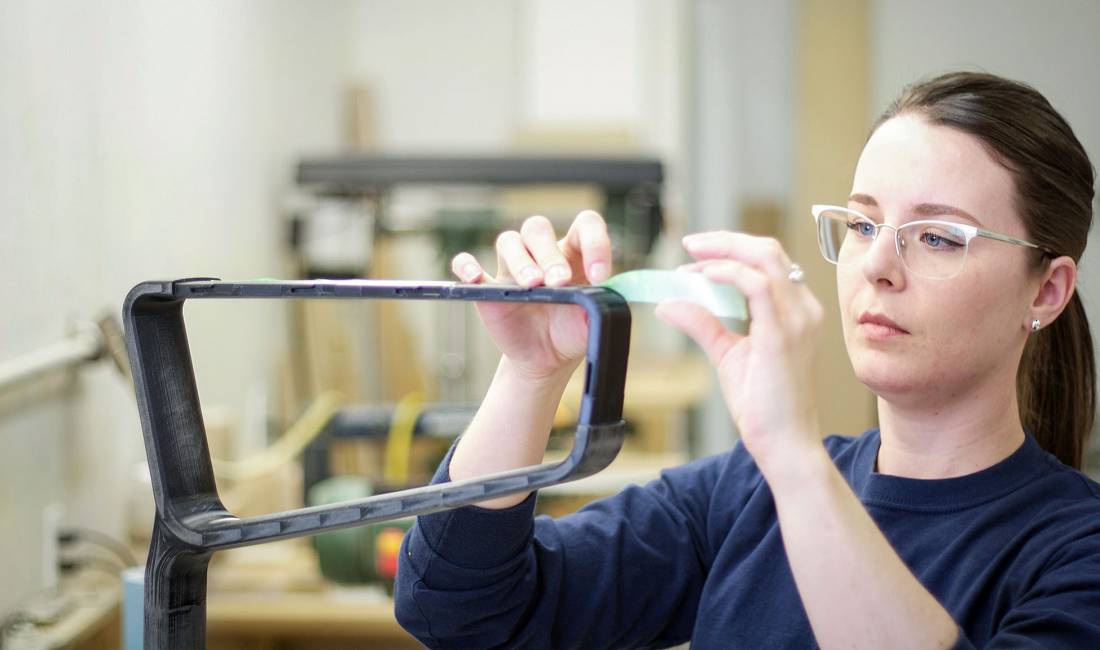Collaborative Spaces: Supporting the Next Generation of Learners
Interview, Trend | November 21, 2024
We spoke with Nick Gillissie, founder and partner at Modus ID and designer of Global’s new product series, Collaborative Spaces. Nick provides his insight into how this furniture collection, which includes mobile team carts, work tables and accessories, meets the needs of today's learning environments.
Q: What did you consider when designing the Collaborative Spaces series for education applications?
My creative process started before the pandemic. I was touring local universities and was really struck with how active learning was transforming the classroom - particularly with its ability to apply knowledge by doing, not just listening. Then post pandemic, we realized how much was lost when students couldn’t come together in person to learn, socialize and to connect.
"These campus spaces where students come to engage and collaborate in real life are where opportunities lie."
– Nick Gillissie
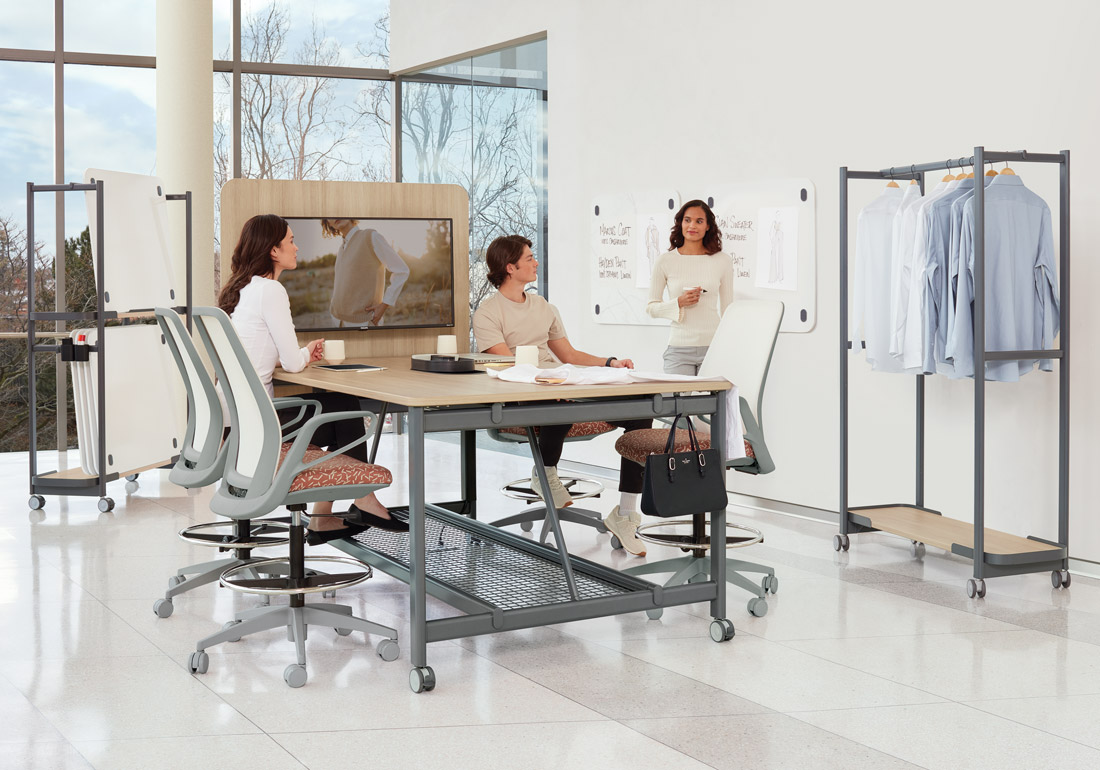
Q: How has this need for connection impacted the design approach within schools?
I think schools are really making more space for hands-on, in-person learning. With the ability to do so much remotely, there has been a lot of thinking around what’s important to the campus experience. Why invest in more lecture halls when students can just as easily log in and listen from home? Rather, these campus spaces where students come to engage and collaborate in real life are where opportunities lie.
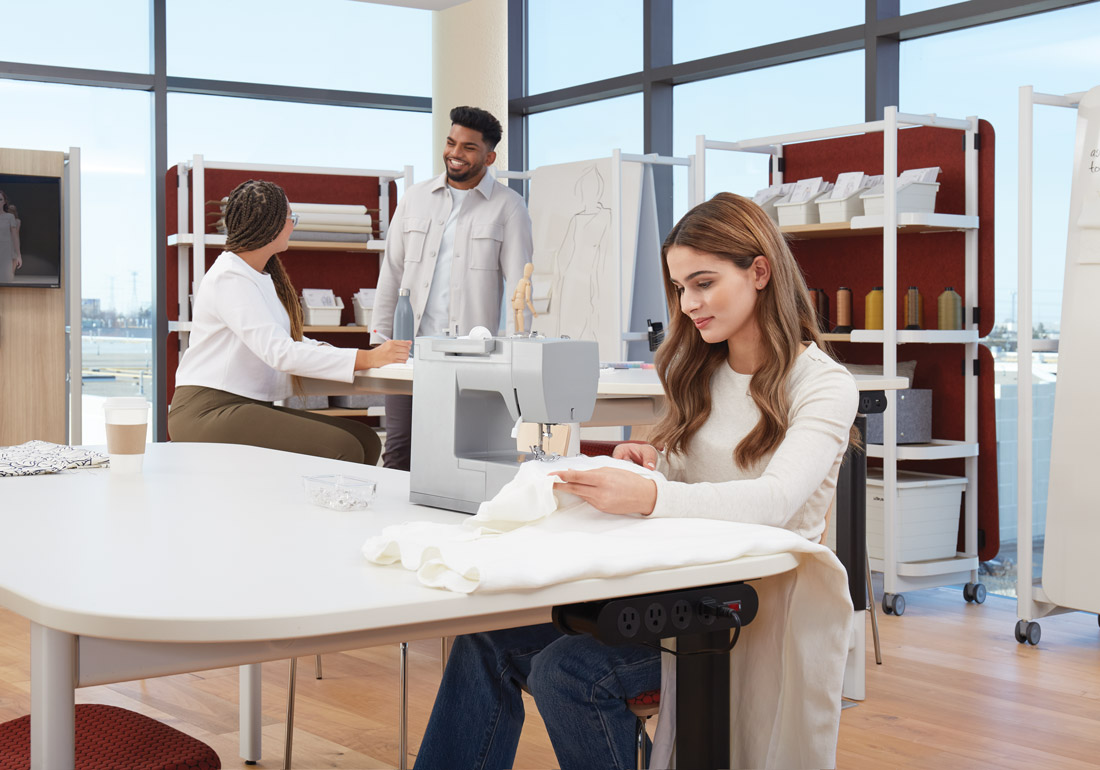
Q: How does this need for the ‘in real life’ experience impact learning spaces?
So, we’re looking beyond how to simply add traditional classrooms of chairs lined up in rows. Designing for more fluid, interactive spaces like labs, studios, meeting rooms and maker spaces encourage the free flow of ideas, group learning and one-on-one co-creation.
"Designing for more fluid, interactive spaces like labs, studios, meeting rooms and maker spaces encourage the free flow of ideas, group learning and one-on-one co-creation."
– Nick Gillissie
These spaces are no longer dedicated to one style of learning. They are constantly shifting, according to the needs of the students and staff – as they need to be flexible, and feature furniture that can move, shift and reconfigure according to their needs for interaction. These spaces also need to multitask like the rooms they’re in, to support a variety of teaching styles within one space, seamlessly.
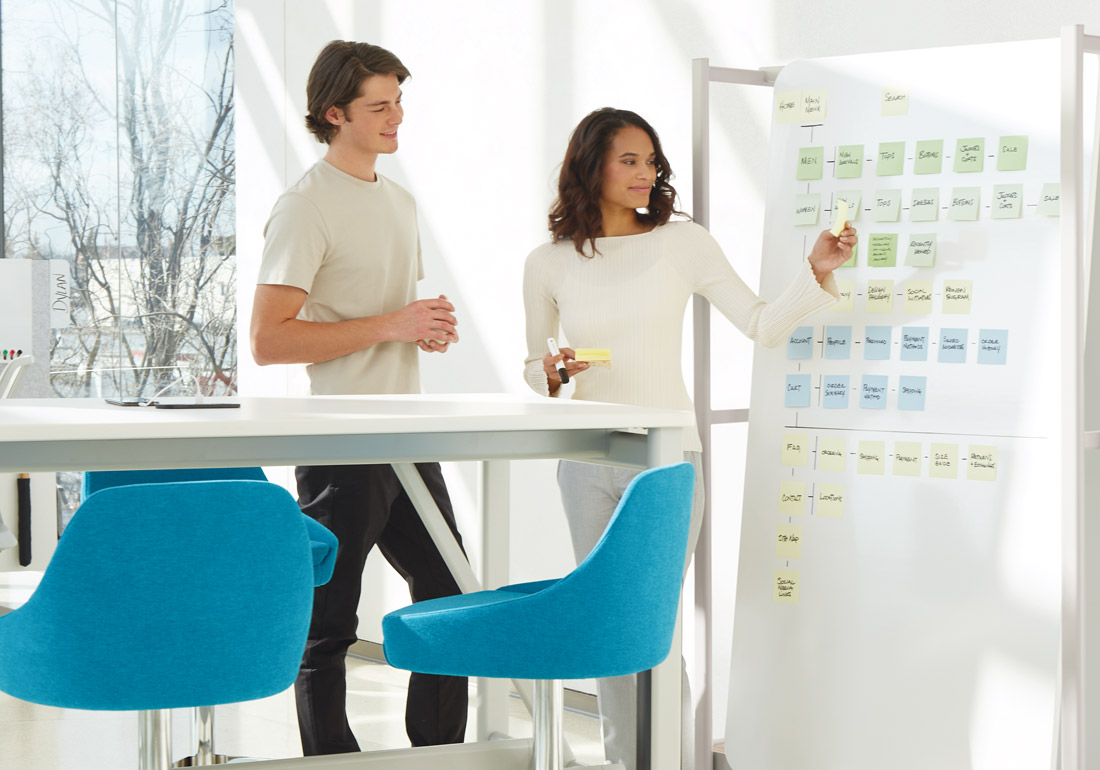
Q: So, how does Collaborative Spaces fit into these spaces beyond the traditional classroom?
The Collaborative Spaces collection really gives the user the power to shape their own experience. Easy to move, the full range of mobile team carts, work tables and accessories can be pulled together to provide moments of interaction, or reconfigured to adapt to changes in workflow.
"Flexibility is key as well – the ability to move everything around to suit the students' needs."
– Nick Gillissie
They can also provide spaces within spaces to help create a sense of place within a larger learning commons or atrium space. Not only does this empower students to have ownership of their space, but also drives engagement by giving them the freedom to reconfigure the space to suit how they want to learn.
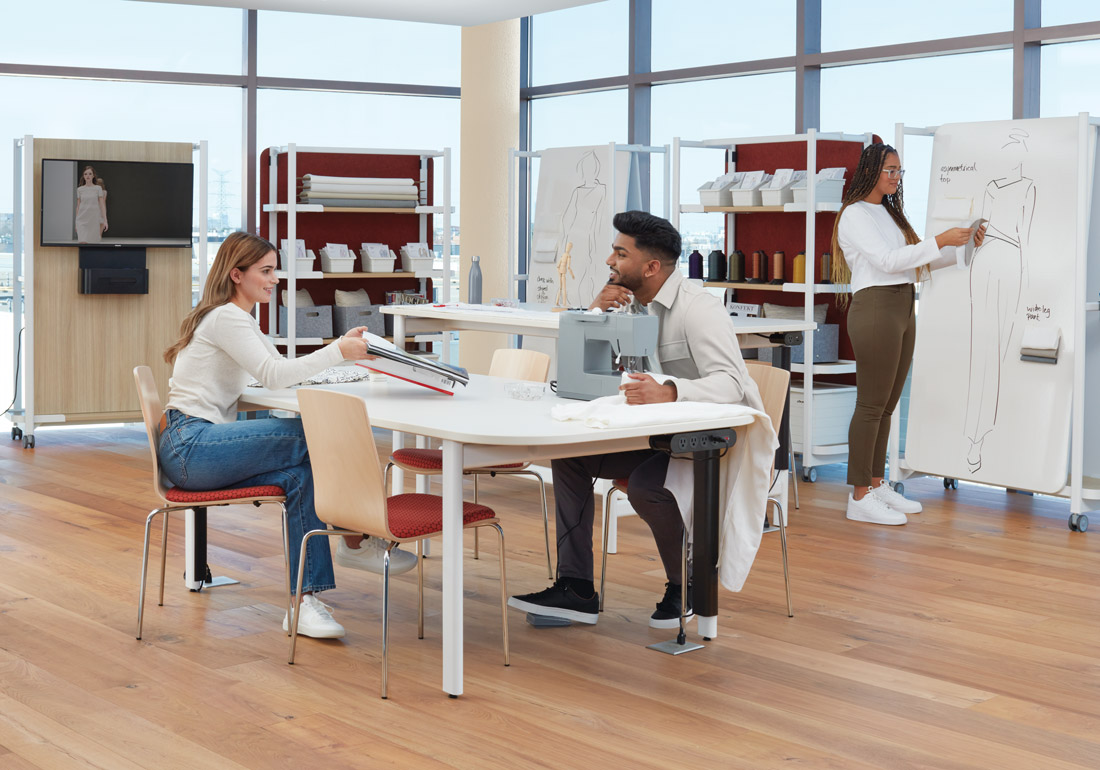
Q: What were the essential attributes you needed to consider while designing Collaborative Spaces to make it education ready?
We needed to ensure that all the furniture pieces in the series could adapt to where and how students want to come together. Students carry so much stuff (with them) all day. Especially the students who commute. They’re nomadic and need places to store their gear, so we built storage into almost every piece. Whether that’s a shelf to put their backpack, a bookcase for equipment, or a hook for their coat. Even the laptop tables have a hook under the surface.
"The Collaborative Spaces collection really gives the user the power to shape their own experience."
– Nick Gillissie
Flexibility is key as well – the ability to move everything around to suit students’ needs. So, everything has casters, and we spent considerable time ensuring pieces like the larger workshop tables incorporated durable casters that could withstand heavy use.
Of course, for today’s technology-driven world, access to power is integrated everywhere. There are also media carts and different ways to share screens. Promoting comfort, wellbeing and accessibility were other important considerations. For example, the shelf under the workshop tables is carefully placed to double as a footrest. The collection also includes height accessibility options for wheelchair users.
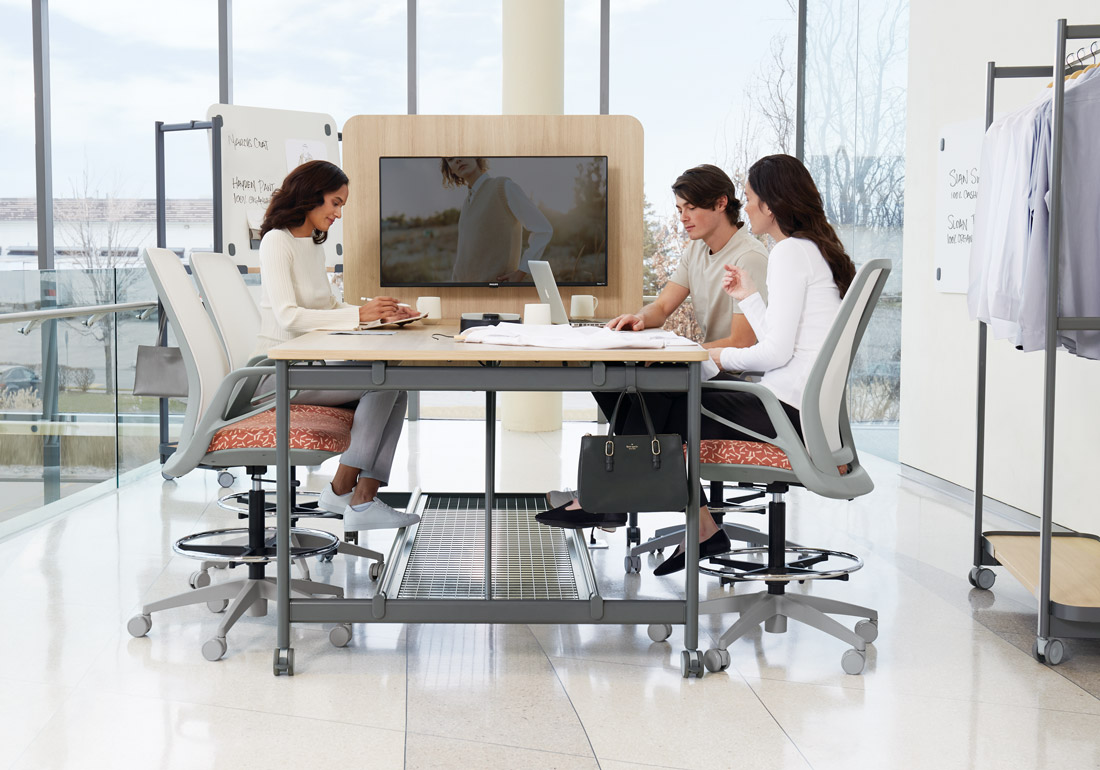
Q: Speaking of wellbeing, how have you designed for sustainability with this product?
Sustainability is integrated into the design of Collaborative Spaces. Primarily, this series is unique in that it has an aluminum frame structure and is assembled via connectors instead of welds. This makes the product modular and enables it to be repaired in the field, thereby saving it from landfill. And when the product reaches end of life, it can be easily disassembled and recycled.
The materiality was also carefully considered. We use 81% recycled aluminum (70% is pre- consumer and 30% is post-consumer) and the particle board contains 85% recycled content. It’s also locally manufactured in North America, which allows us to produce a product that has lower embodied carbon, making Collaborative Spaces something we can feel good about.
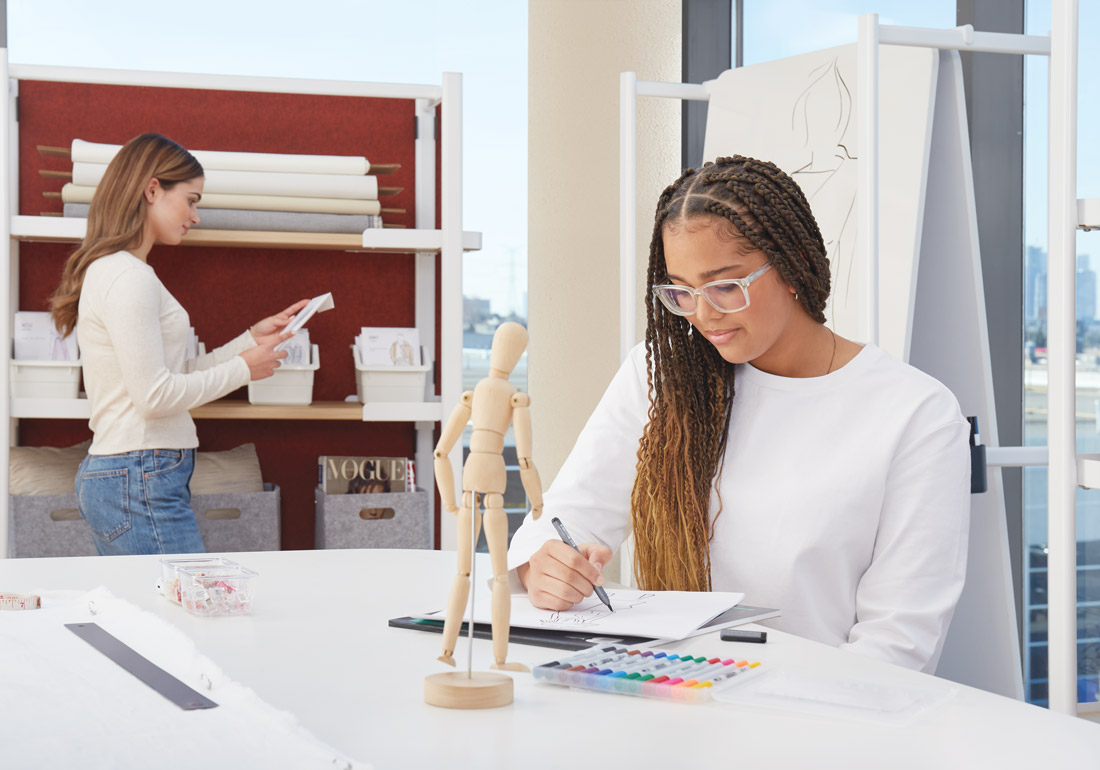
Q: Ultimately, when you see Collaborative Spaces installed in a school, what makes you say “Yes, this product is working as planned!”?
For me, the biggest satisfaction is seeing students arranging and configuring Collaborative Spaces to their needs, because it means they’re taking ownership of their space. It is that ownership that promotes engagement and comfort and even well being. To me, those are the crucial components of a rich campus experience.
Enjoy this article? Don't forget to share.


